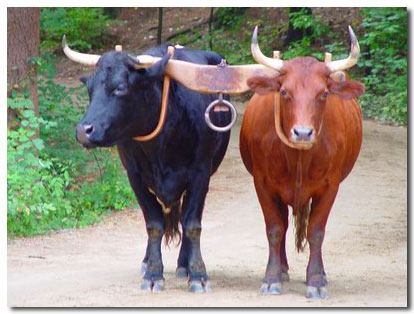|
Dan Gibson
![gibson[at]cs.wisc.edu](Images/email.jpg)
Note: I have graduated and moved on. This page is no longer up-to-date.
Dan Gibson on Google Sites.
|
![[Image]](Images/dan.jpg) |
If anyone knows the original, citable source of the following quote, please send me mail (even if it
ends up not belonging to Seymour Cray).
If you were plowing a field, which would you rather use: Two strong oxen or 1024 chickens?
--Attributed to Seymour Cray
Now available: fencing pictures!
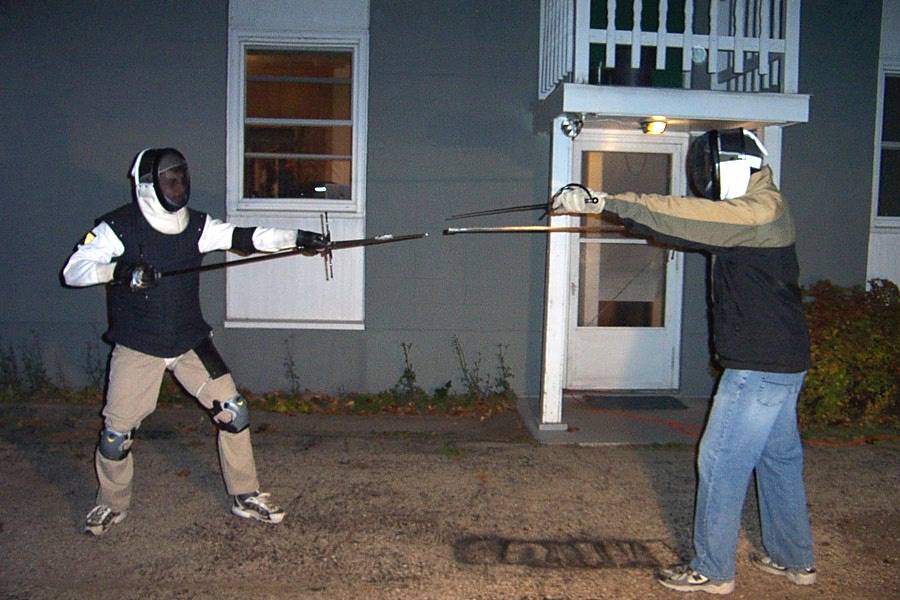
I am on the left in these photos. My opponent is Jake Adriaens,
a colleage and friend. We are practicing with our Renaissance-era Rapiers and Daggers. Rapier, with
or without the dagger, is a so-called archaic form--not because it is no longer practiced,
but because it is not an olympic form like Saber, Foil, and Epee.
In this photo, I am using the dagger guard low ward, which means my dagger-side foot is forward,
and both weapons are pointed toward my oponnent. Jake's stance is is not quite wide enough in
this shot to be [stable | considered a low ward].
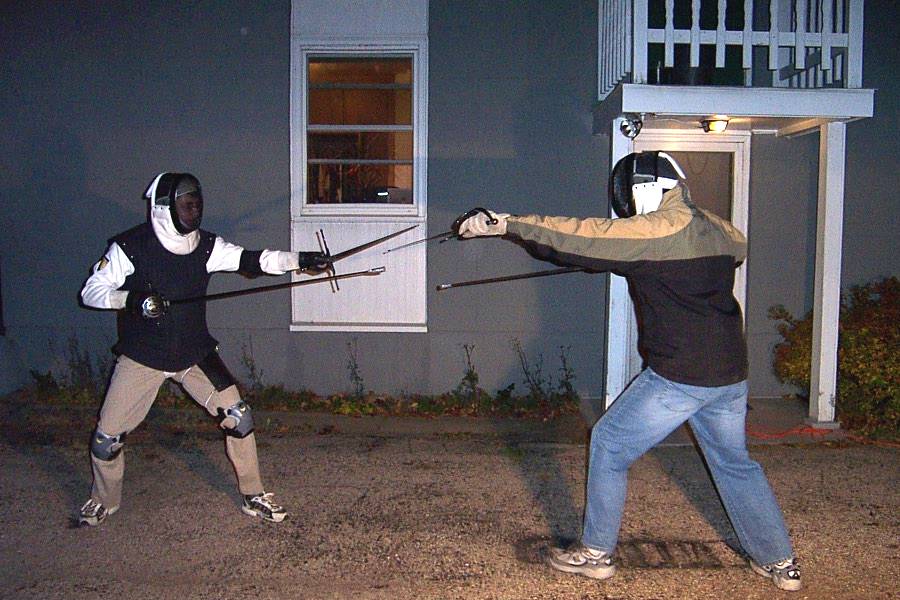
Jake has adopted a much better stance, and is preparing to attack. Now would be a good time to
point out the equiment in use here. For now, ignore Jake, as his equiment is improvised.
-
First, notice the fencing masks. These are made of mesh in the front, but are surprisingly
tough. I have taken thrusts, head-butts, punches, etc. to the face mask without damage (to
my face, at least).
-
Next, there are the weapons. The longer is the rapier, the shorter is the dagger. The
dagger is usually used defensively as a parrying device. The rapier is used primarily for
thrusting, but can occasionally slash as well. These weapons are blunted (notice the
duct tape holding the blunts on), and are quite flexible. It still hurts to take a direct
thrust, but it is quite non-lethal.
-
The most important piece of equipment in a fencer's equipment chest are the gloves.
Without them, hodling the weapon would be quite painful after only a few interchanges.
-
Notice that underneath the black padded jacket, I am wearing a white fencing coat. This
is a so-called "puncture-proof" jacket. Should a weapon break, it would become a sharp,
potentially lethal object. In theory, blows made accidentally with broken blades will not
penetrate one of these jackets (yea, right).
-
I am also wearing some other armor--kneepads, a thighpad, an elbow pad, a gorge (not
visible). These are essentially optional, but usually a good idea when Jake is around.
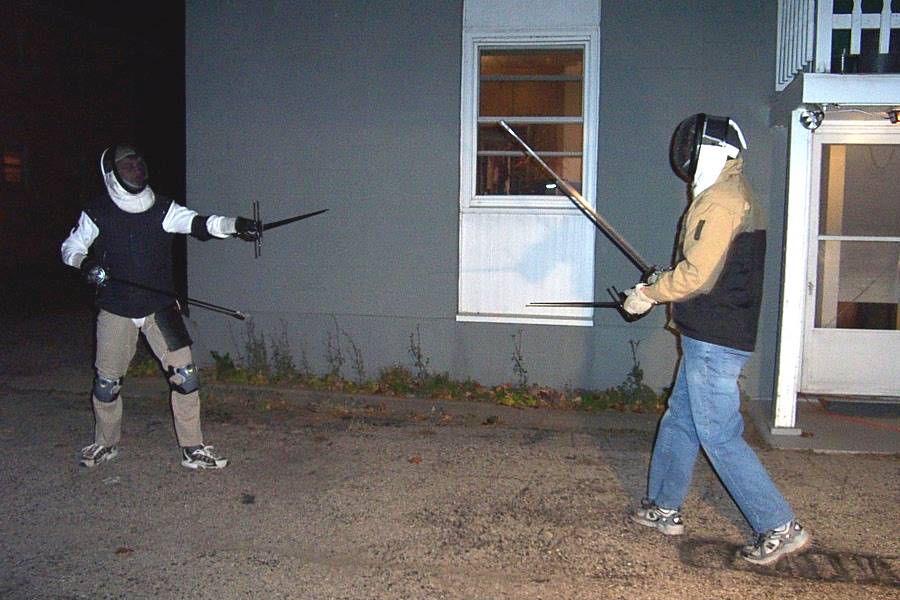
Jake attacked a moment ago, and I adopted a strategy of "parry by distance," that is, I retreated.
My strategy is to often retreat, then return in attack. Jake will become accustomed to to my
retreating, and will be more brazen in his attacks, until finally, I do not retreat, and instead
introduce my blade to his [unprotected] torso.
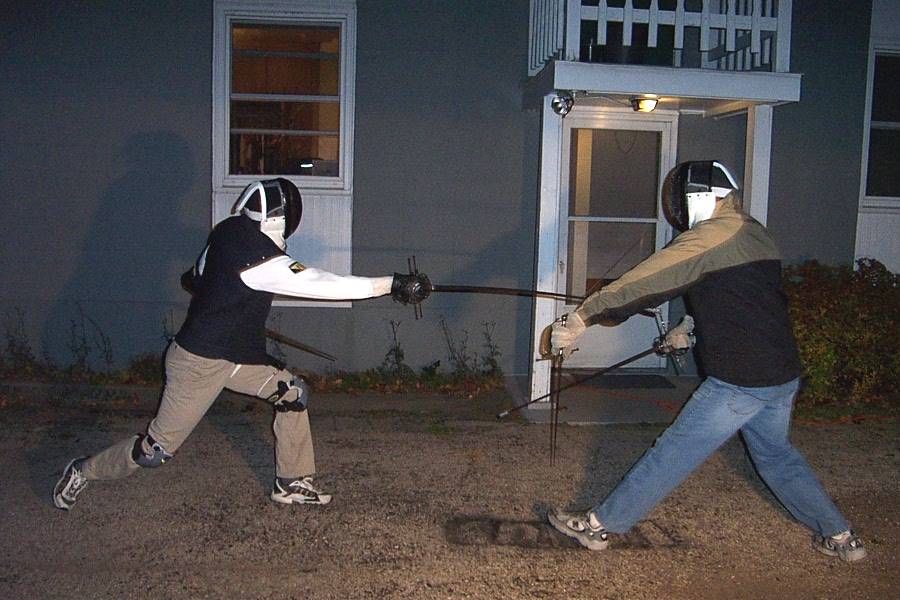
Here I am returing the attack. I have slightly misjudged the distance in this attack, as you
can see that the tip of my blade is falling short of Jake's torso. This sometimes happens,
especially when fencing in the dark.
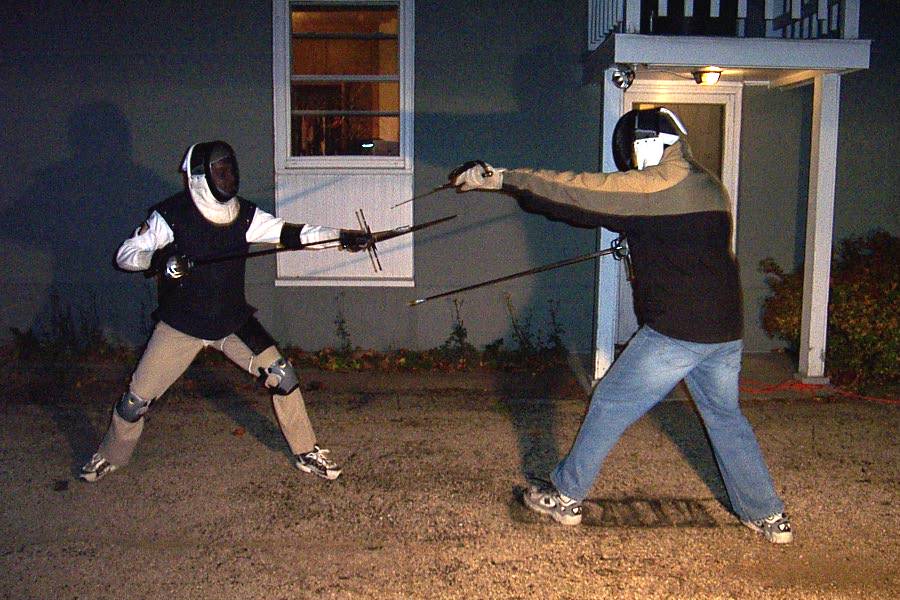
Once again, we have both returned to the low ward--notice that both daggers are well placed
to deflect blows from the rapiers.
And now...on to some non-fencing photographs.

My wife, Megan, and I, on our recent visit to Seattle.

A caricature-like image of me--with a piece of my forehead missing for no apparent reason.
Best viewed on Google Chrome. Get it here.
|
![gibson[at]cs.wisc.edu](Images/email.jpg)
![[Image]](Images/dan.jpg)
